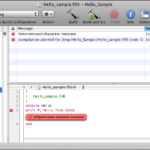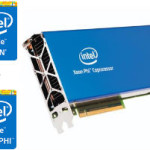Vectorization and threading are critical to using such innovative hardware product such as the Intel Xeon Phi processor. Using tools early in the design and development processor that identify where vectorization can be used or improved will lead to increased performance of the overall application. Modern tools can be used to determine what might be blocking compiler vectorization and the potential gain from the work involved.
NERSC Dungeon Session Speeds Code for Cori Supercomputer
Six application development teams from NERSC gathered at Intel in early August for a marathon “dungeon session” designed to help tweak their codes for the next-generation Intel Xeon Phi Knight’s Landing manycore architecture and NERSC’s new Cori supercomputer. “We try to prepare ahead of time to bring the types of problems that can only be solved with the experts at Intel and Cray present—deep questions about the architecture and how applications use the Xeon Phi processor. It’s all geared toward optimizing the codes to run on the new manycore architecture and on Cori.”
Code Modernization for High Performance Hardware
“Parallel software and parallel hardware, used together will give the best results for an application. If the application is serial in nature, and the processor is serial, then there will obviously not be a great gain in performance. When the application is parallelized, but the processor is serial, again, no great gain. A third combination is when the application is serial and the processing is parallel. Since the application cannot take advantage of the increased power of the hardware, there will not be a great performance boost. The best and really only solution is to modify the application to run in parallel, using high performing parallel hardware.”
Modernizing Materials Code at OSC’s Intel Parallel Computing Center
A research team at the Ohio Supercomputer Center (OSC) is beginning the task of modernizing a computer software package that leverages large-scale, 3-D modeling to research fatigue and fracture analyses, primarily in metals. “The research is a result of OSC being selected as an Intel Parallel Computing Center. The Intel PCC program provides funding to universities, institutions and research labs to modernize key community codes used across a wide range of disciplines to run on current state-of-the-art parallel architectures. The primary focus is to modernize applications to increase parallelism and scalability through optimizations that leverage cores, caches, threads and vector capabilities of microprocessors and coprocessors.”
Allinea Speeds Tomorrow’s Meteorological Code
Allinea Software reports that the company is helping weather and climate researchers to adapt advanced weather models to better exploit today’s technology capability and get ready for future platforms. The company will address leading climatologists and meteorologists on best practices for scalable code development April 6-7 at the 4th ENES HPC Workshop. The session will reference the application of Allinea’s tools across over 20 weather and climate customers worldwide.
Texas A&M is the Latest Intel Parallel Computing Center
Texas A&M University’s High Performance Research Computing (HPRC) center is the latest Intel® Parallel Computing Center. “HPRC is proud to be recognized as an Intel Parallel Computing Center,” said Honggao Liu, director of High Performance Research Computing. “At HPRC we use high-performance computing to unite experts in numerous fields of study. This grant and multi-disciplinary project will allow us to better understand and solve issues within this critical software.”
Intrinsic Vectorization for Intel Xeon Phi
“It is important to be able to express algorithms and then the coding in an architecture independent manner to gain maximum portability. Vectorization, using the available CPUs and coprocessors such as the Intel Xeon Phi coprocessor, are critical for HPC applications where performance is of the highest importance. However, since architectures change over time and become more powerful, using libraries that can adjust to the new architectures is quite important.”
Code Modernization for Smarter Geophysics
Today Allinea announced plans to champion what it sees as a key survival message for the Energy industry when it exhibits at the Rice Oil and Gas HPC Conference in Houston next week. “We’ll be underlining to geophysicists at the conference the real commercial gains to be had from focusing on code performance,” said Robert Rick, Allinea’s VP of Sales, Americas. “HPC is helping the industry to operate more efficiently. The next step is for this market is to use code optimization to speed up the valuable seismic imaging and reservoir modeling processes, which are now essential to this industry.”
Video: Intel Black Belt Discussion on HPC Code Modernization
In this video from the Intel HPC Developer Conference at SC15, James Reinders hosts an Intel Black Belt discussion on Code Modernization. “Modern high performance computers are built with a combination of resources including: multi-core processors, many core processors, large caches, high speed memory, high bandwidth inter-processor communications fabric, and high speed I/O capabilities. High performance software needs to be designed to take full advantage of these wealth of resources. Whether re-architecting and/or tuning existing applications for maximum performance or architecting new applications for existing or future machines, it is critical to be aware of the interplay between programming models and the efficient use of these resources. Consider this a starting point for information regarding Code Modernization. When it comes to performance, your code matters!”
Podcast: Top 10 Ways Intel Will Drive HPC Democratization in 2016
The use of High Performance Computing continues to grow in the enterprise and beyond. In this podcast, James Reinders from Intel describes how Intel will continue to drive HPC democratization in 2016. “At Intel, our passion to help drive the democratization of HPC is exemplified by many things. Here is my list of ten things which caught my attention as being most significant as we enter 2016.”











